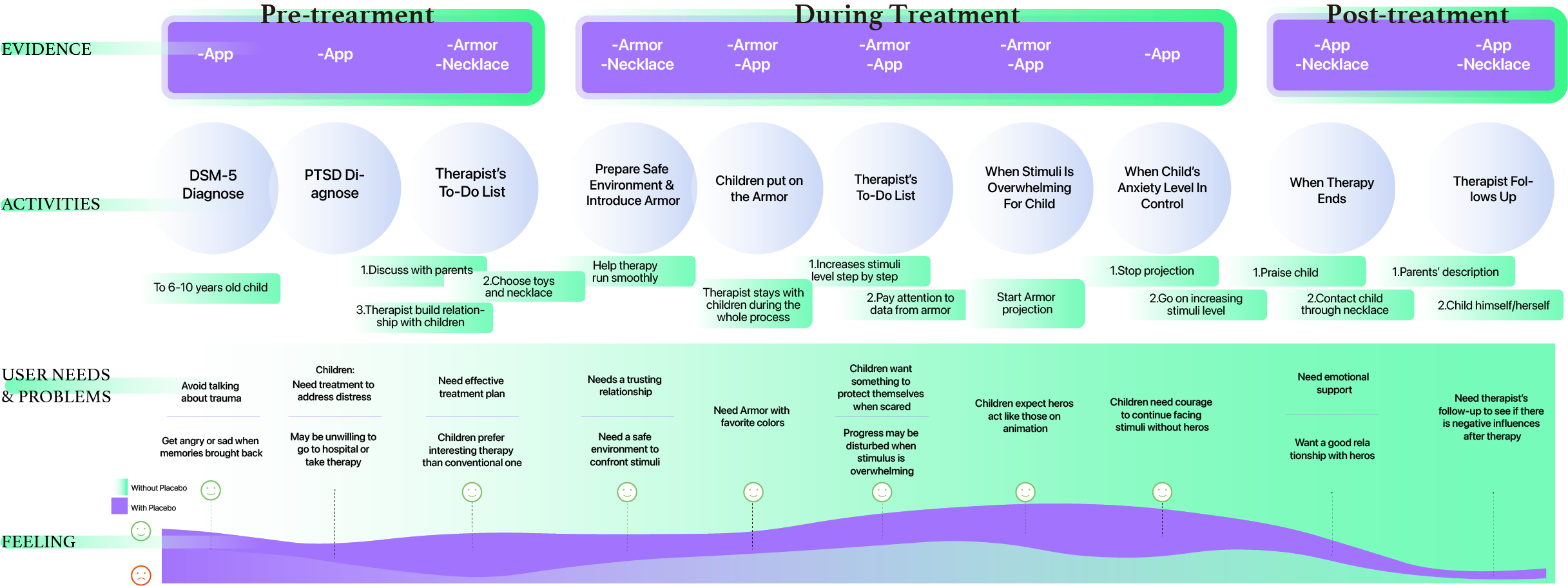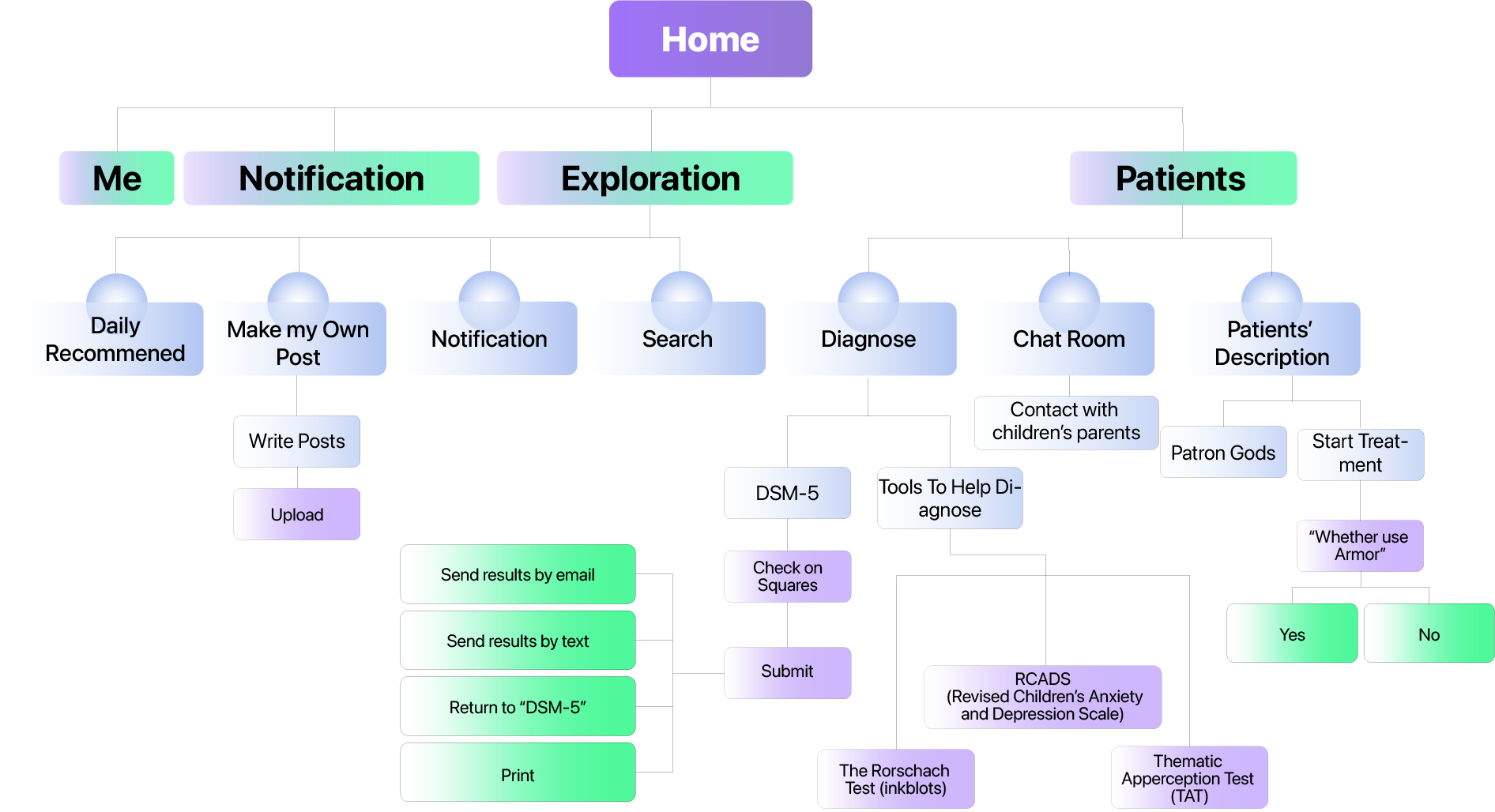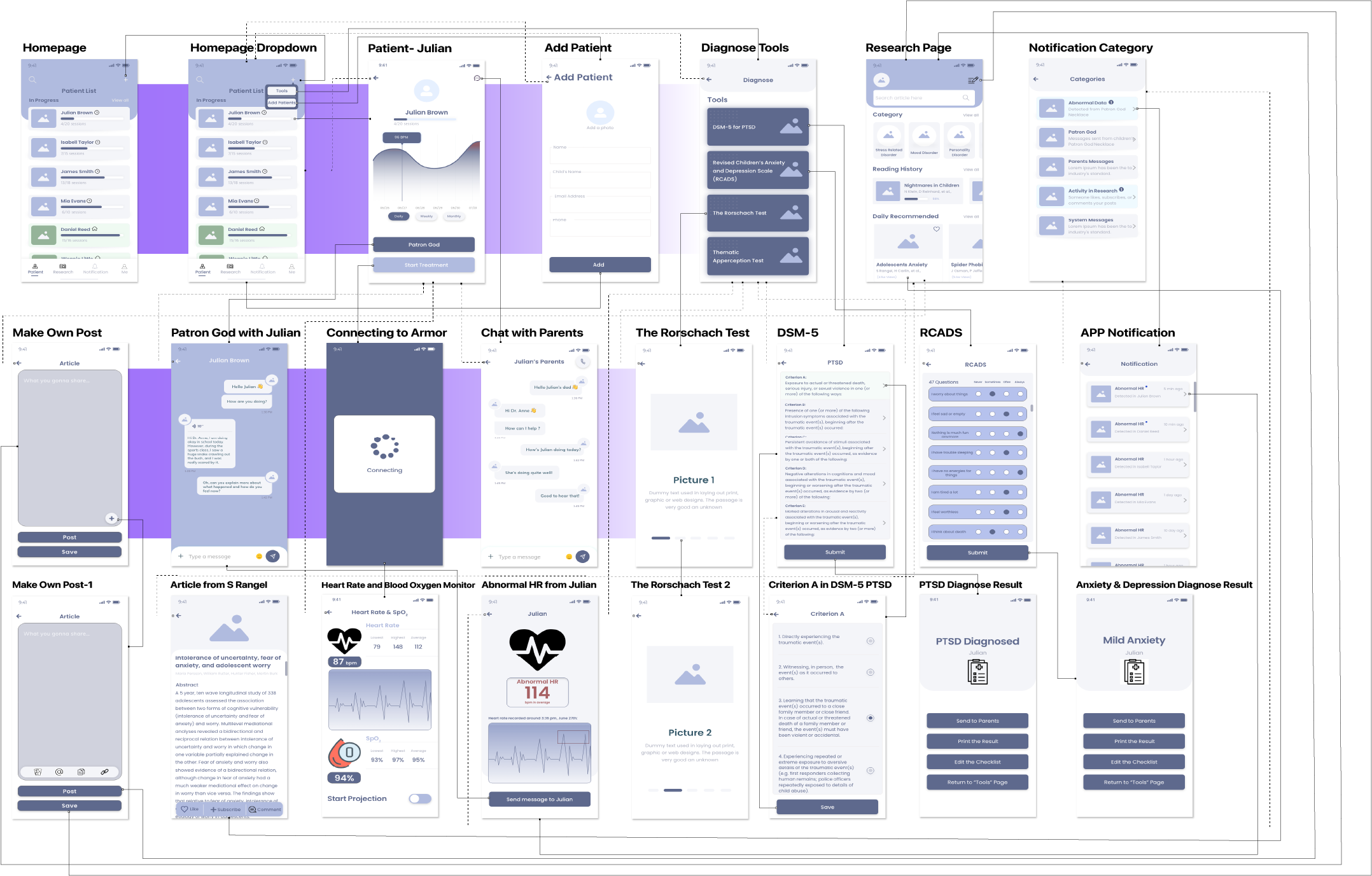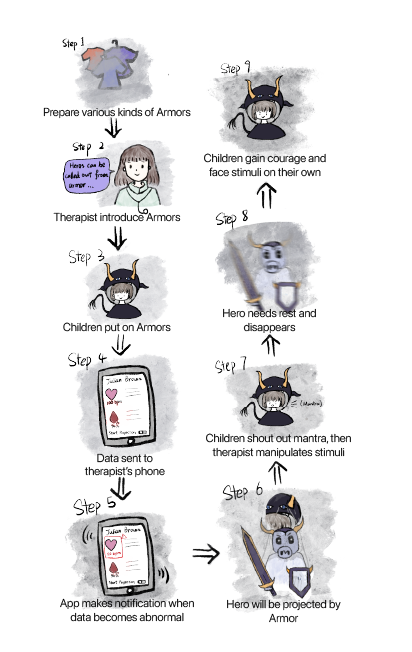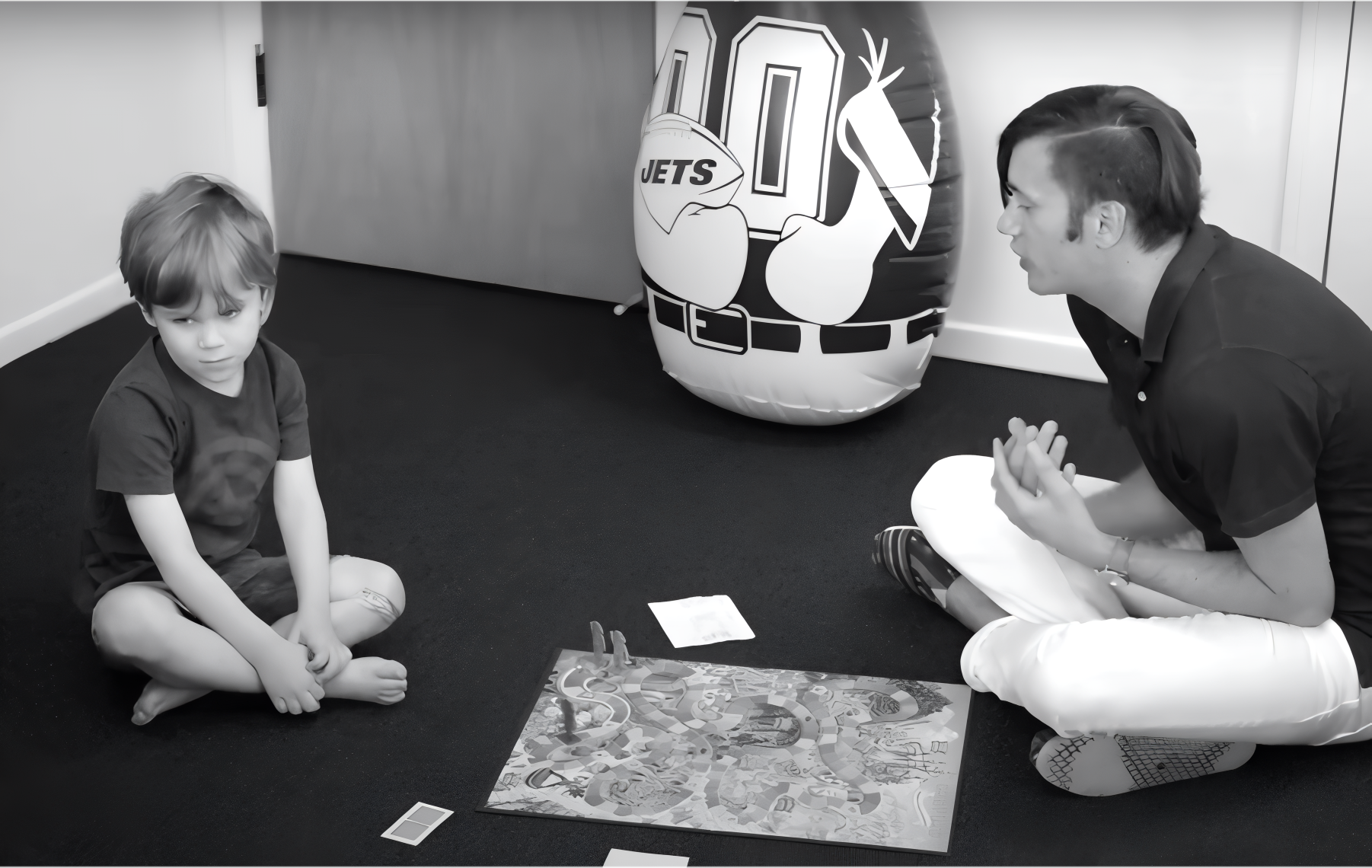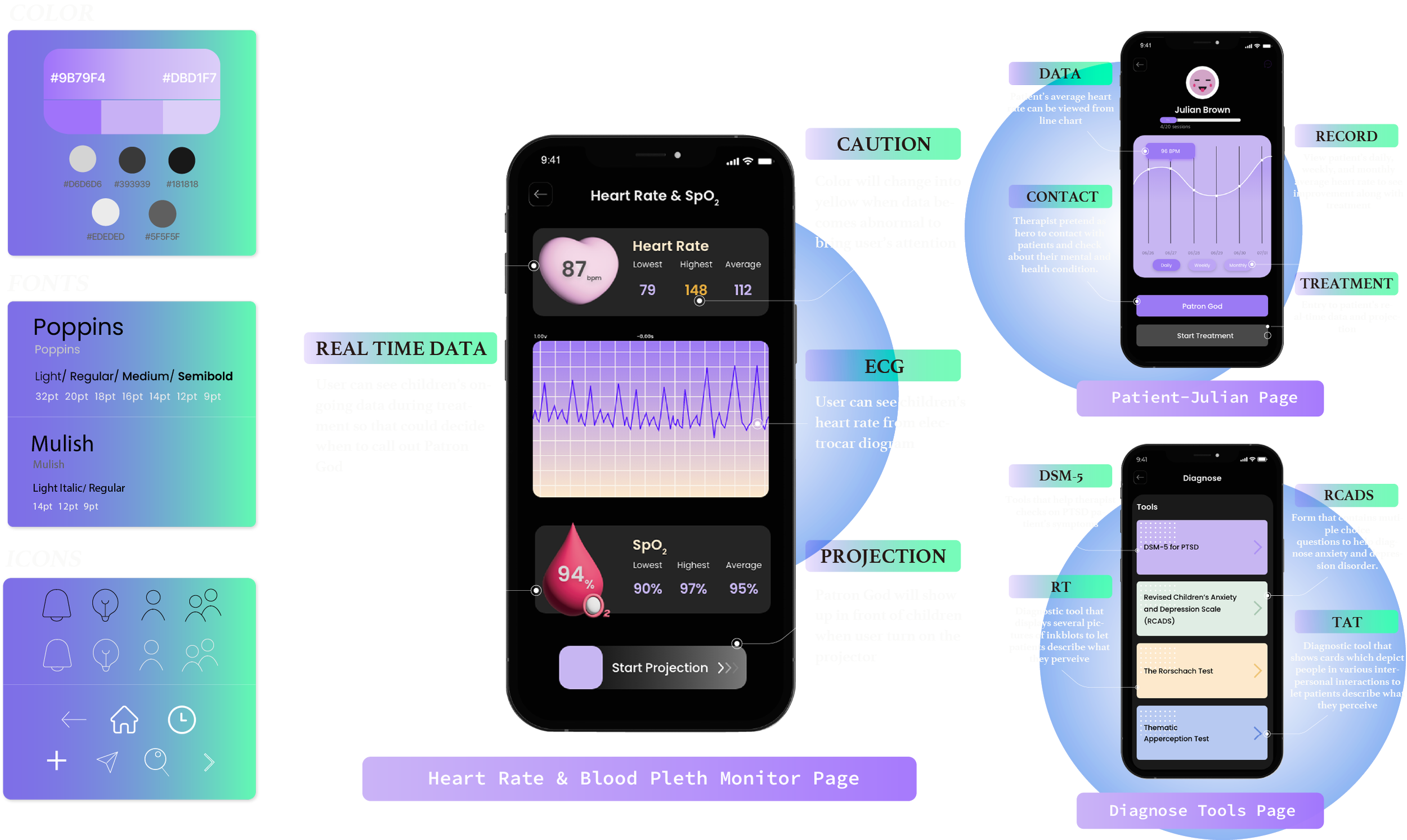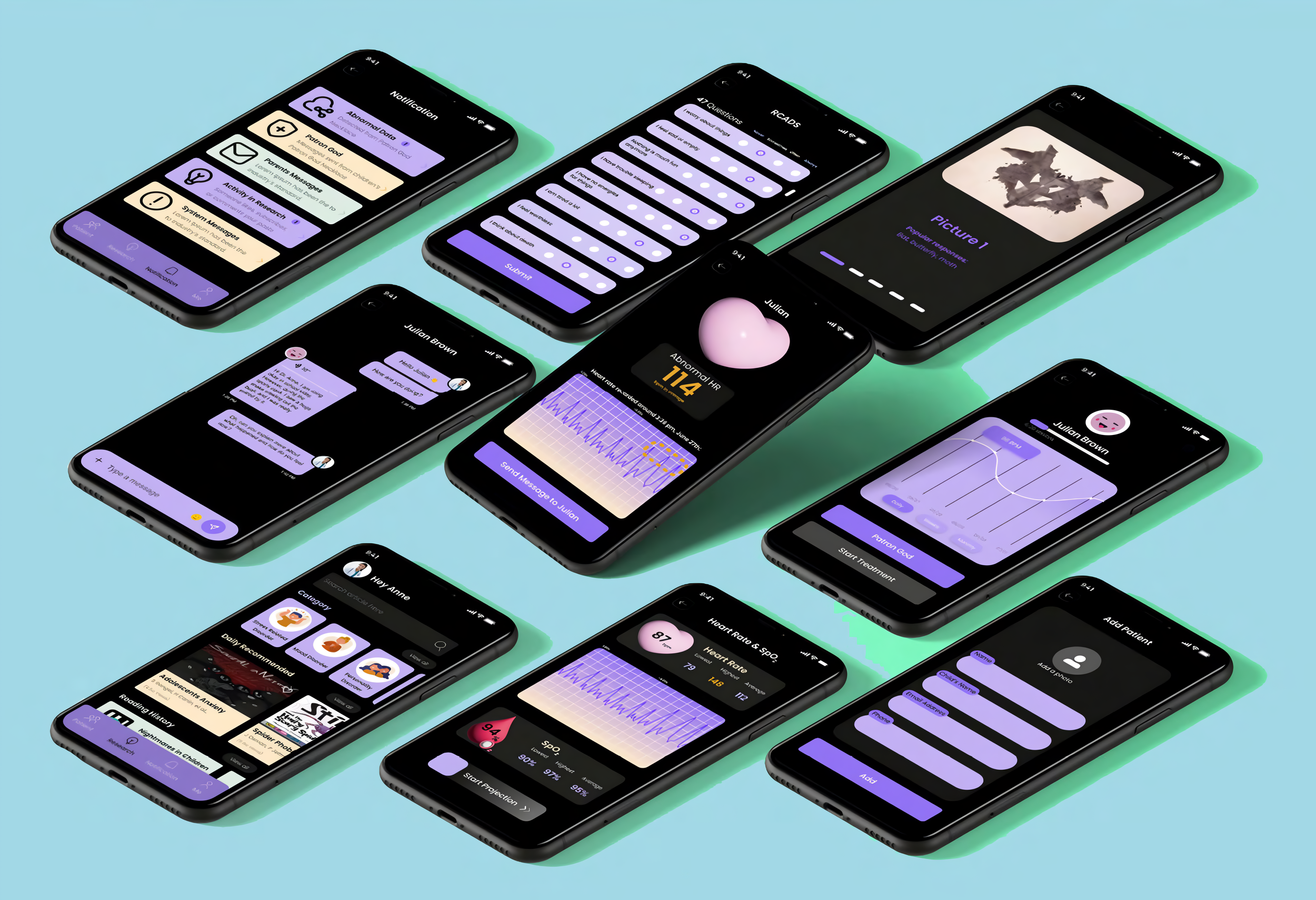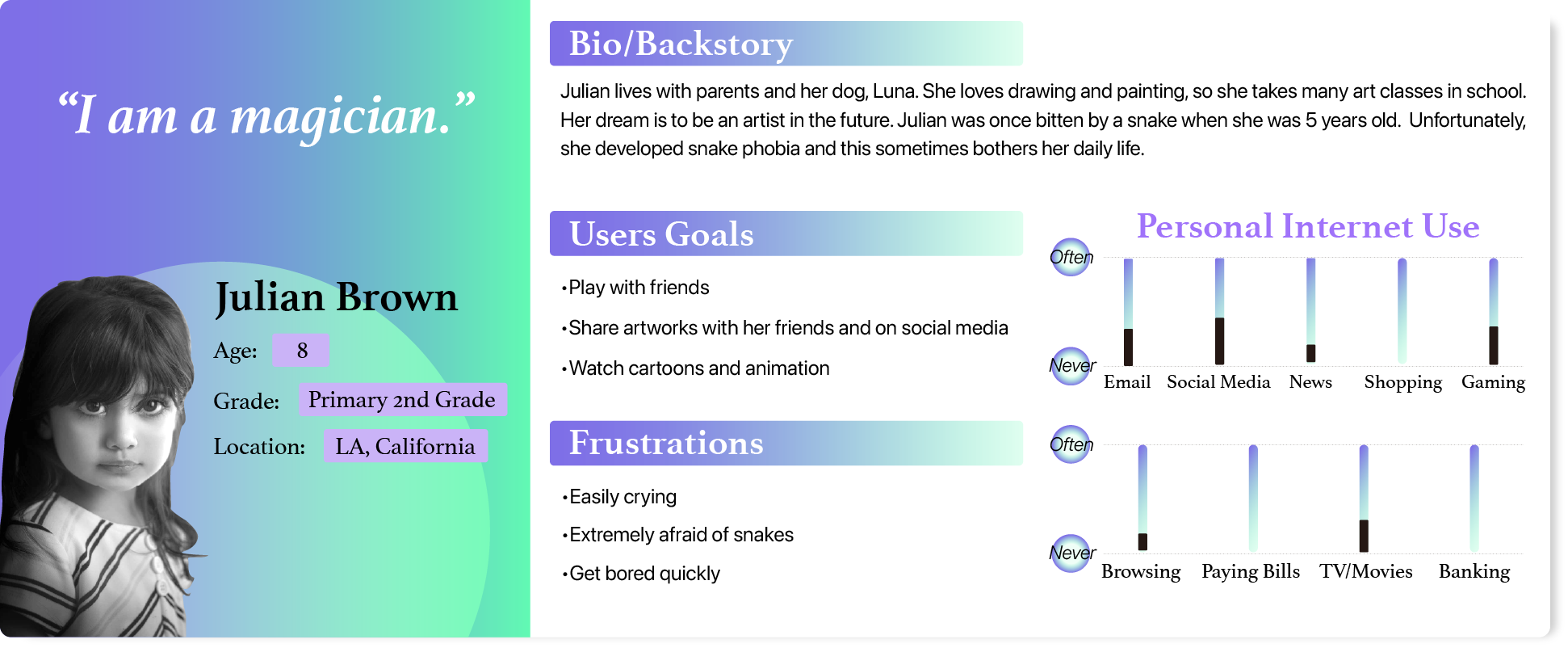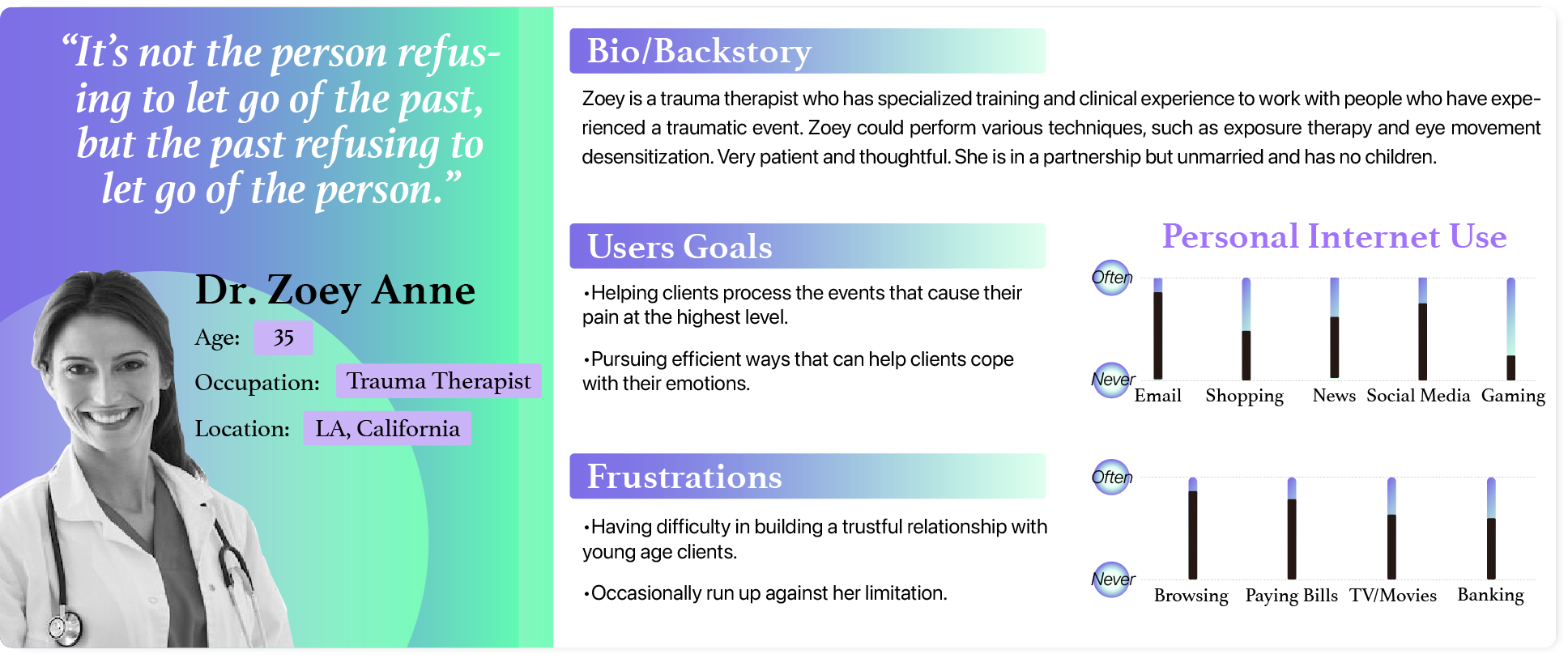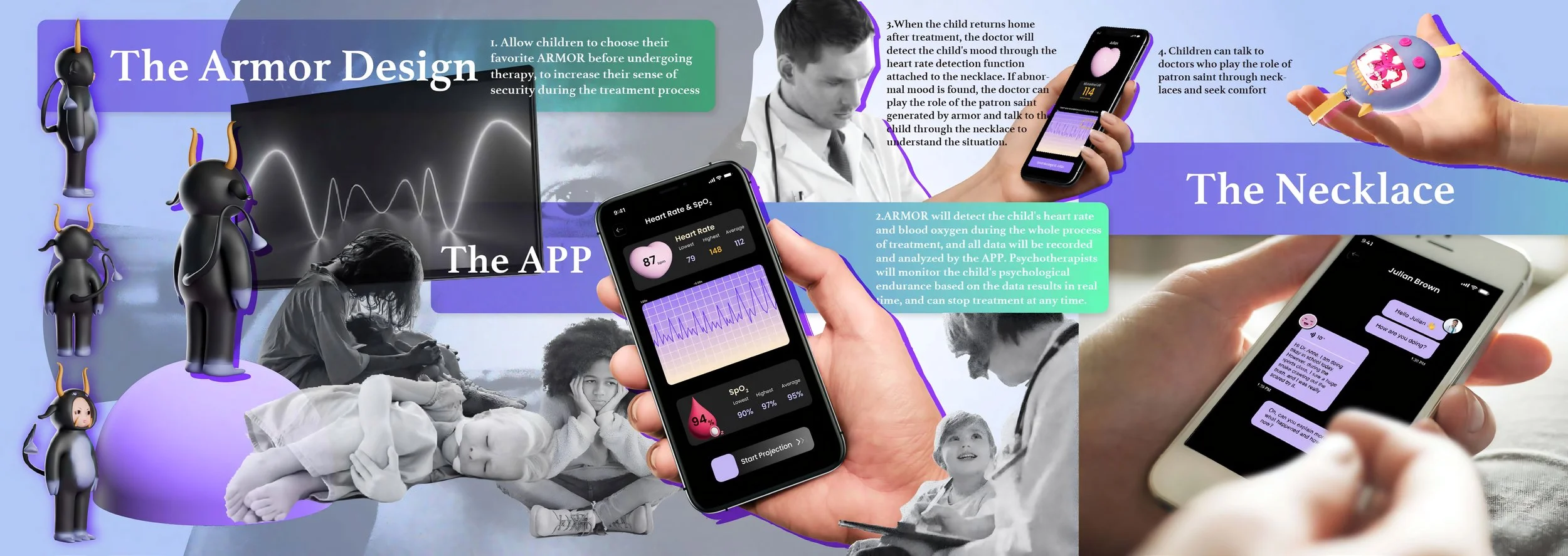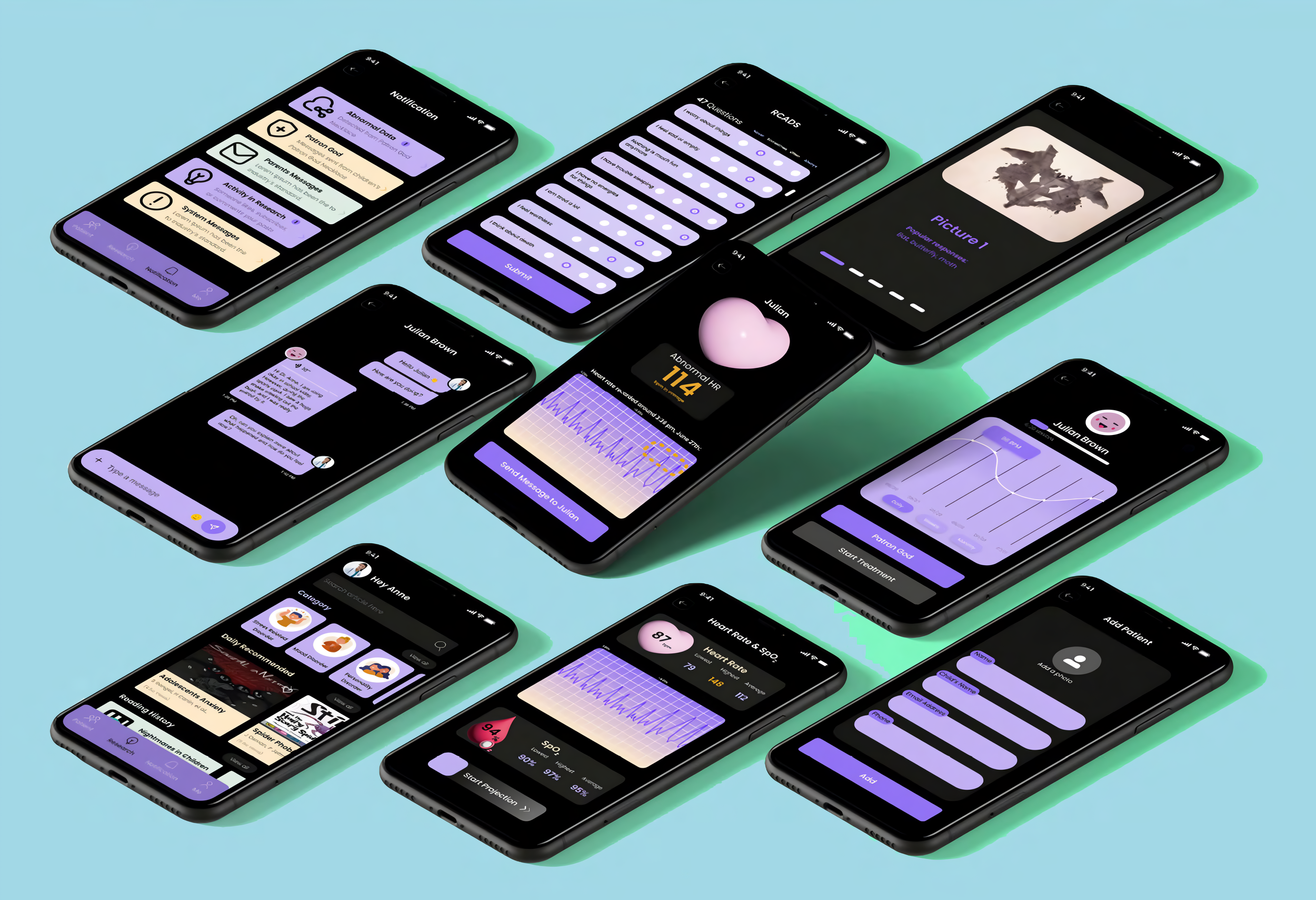
MindArmor
UI/UX Design to Support Trauma Recovery in Children with PTSD
“How might we use wearable design and storytelling to help children with PTSD feel protected and emotionally supported in exposure therapy?”
Context
This project addresses the emotional challenges of children with PTSD by combining a therapeutic app, wearable design, and placebo-based therapy to make treatment feel safer, more engaging, and empowering.Role
- UI/UX Designer
- UX Researcher
- Design Strategist
- PrototyperTeam
- NYU Psychology Club
- ShifanTools
Figma, Adobe Illustrator, Photoshop, Procreate, Premiere Pro, Adobe XD, Qualtrics, Google Workspace, Notion, Pinterest"Whenever I’m doing the session and they ask me to remember things, my heart beats really fast. I just wish I had something, like a shield, to help me feel brave."
Introduction
During my undergraduate studies in psychology, I learned in a clinical psychology class that one core process in PTSD treatment—exposure therapy—can be extremely overwhelming, especially for children. This insight deeply moved me and led to the initiation of this project. Drawing from what I learned about the placebo effect, I explored how belief, emotional projection, and design could come together to support recovery. By designing a therapeutic app paired with a “protective armor,” the goal is to help children feel braver, safer, and more willing to participate in trauma treatment.Background
Children who experience traumatic events—such as domestic violence, natural disasters, or school abuse—are at significant risk of developing Post-Traumatic Stress Disorder (PTSD). Studies show that up to 60% of children are exposed to trauma in their lifetime, and among those exposed, up to 16% develop PTSD (Alisic et al., 2014; Hiller et al., 2016). In severe cases, PTSD can impair children's emotional regulation, social development, and ability to engage in treatment, especially when the therapy requires recalling distressing events.While exposure-based therapy is the gold standard for PTSD treatment, it can be overwhelming, especially for children. This method often requires patients to repeatedly recall traumatic memories, which may cause fear, resistance, and emotional exhaustion. As a result, treatment completion becomes a major barrier: meta-analyses show that 11–13% of children drop out of trauma-focused cognitive behavioral therapy (Gutermann et al., 2016). These challenges highlight the need for more emotionally supportive and engaging approaches tailored to young users.
This project responds to that gap by combining a UX-designed therapeutic app, wearable “armor,” and the placebo effect to reduce anxiety and support treatment adherence. The system leverages children’s belief in protective “heroes” to provide a sense of safety and control during exposure sessions. By making therapy more playful, familiar, and emotionally secure, the goal is to help children feel brave enough to confront trauma and more likely to complete the healing process.1. User Journey Map ‣
2. IA ‣
3. Wireframe ‣
4. Storyboard ‣
1. User Journey Map ‣ 2. IA ‣ 3. Wireframe ‣ 4. Storyboard ‣
